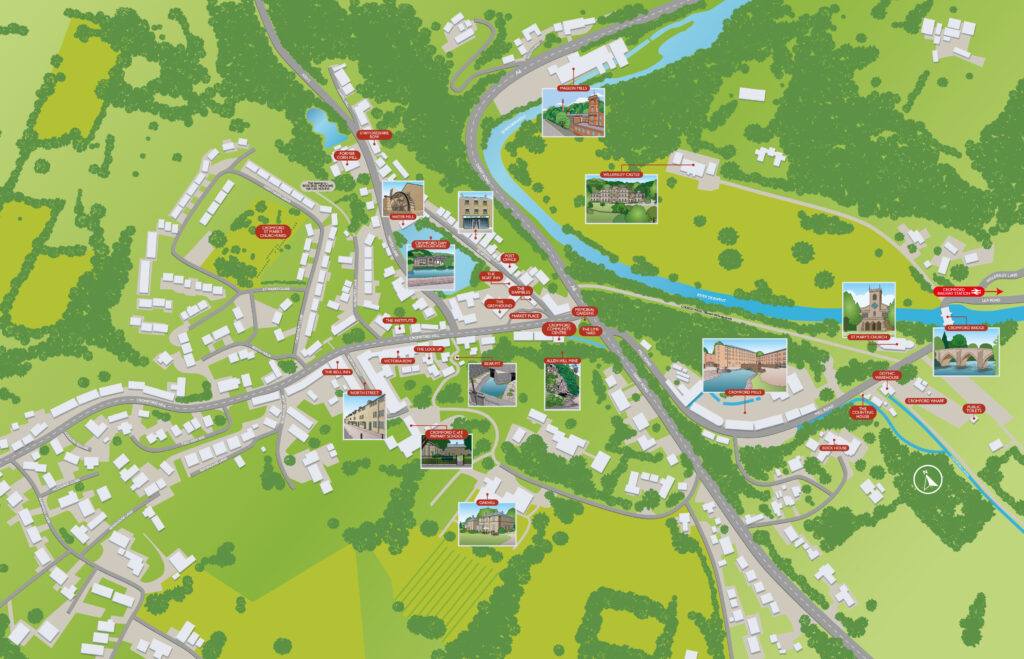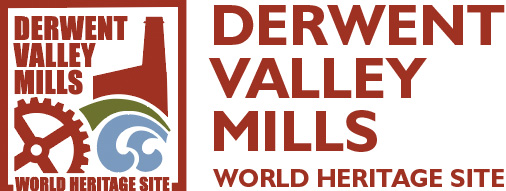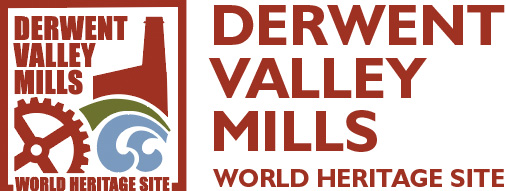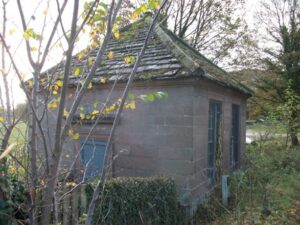Cromford

Welcome to Cromford
This is a place of natural beauty and calm, where pioneering industrial buildings nestle in a dramatic landscape – its river and resources were once harnessed to create mills, railways, canals and new communities. Industries have come and gone, but their structures remain as testimony to the visions of Arkwright and his 18th century contemporaries who led the world with their innovations.
It is a place of contrasts – of dramatic river gorge and wider valley, of natural light and factory darkness, of owner’s mansions and mill workers’ cottages, of old and new ways of labour, and of the different lives of master and worker. Where ancient industries flourished, new ideas and technologies now thrive, alongside 21st century makers and creators.
Quietly, nature has reclaimed its presence amongst the iron and stone – providing havens for wildlife and for generations of people to find peace and tranquillity amongst the imprints of the past.
There are many points of interest in Cromford Village and these are shown on the map that you can download here
The Village
Cromford, a village on the southern edge of the Peak District, is well known through its connection with Sir Richard Arkwright, who established his first water powered cotton spinning mill here in 1771. Set in a valley, carved by the River Derwent, it is surrounded by glorious wooded hills and dramatic cliffs.
Cromford is a charismatic village, with a pretty village pond and delicious surprises around every corner. Here you can discover some of the oldest purpose-built industrial housing in the world, as well as traditional shops and pubs and school, built by the Arkwright family, for the millworkers. Look out for the Old Lock Up which used to be the jailhouse, but is now a contemporary art gallery.
As you wander around the village, you will notice the most distinguished building in architectural style is The Greyhound Inn, now a hotel and restaurant. Built by Richard Arkwright in the 18th century, it provided luxury accommodation for his business associates and important visitors.
In the Market Place, to the side of The Greyhound, you will see the authentic Georgian Shambles. They still contain small shop units for local independents which are well worth exploring.
Why not saunter up Scarthin, to the rear of The Shambles, for a wonderful view of the Greyhound pond? Whilst there, you can also drop into the famous Scarthin Bookshop to browse this treasure trove of books, old and new.
The village has a vibrant community and events diary too. With independent shops, art galleries, pubs and cafes, you’re sure to find something unique here.
The Mills
Across the A6 you will find Arkwright’s Cromford Mill. This houses the Visitor Gateway for the World Heritage Site and the Arkwright Experience. With daily guided tours, a packed programme of activities, events and exhibitions, Cromford Mill has plenty to keep you, your friends and family absorbed any day of the year (except Christmas day!).
Towering over the mill yard is Scarthin Rock, from where you can get a marvellous view of the surrounding area.
Beyond the mill walls, you will happen upon the new wooden sculpture trail and picnic area by the River Derwent. You might also notice St Mary’s Church, founded by Sir Richard Arkwright, peeping out from its curtain of yew trees. Some of the Arkwright family are buried in its small cemetery behind the church. Follow the riverside walk for a scenic shortcut to Sir Richard Arkwright’s showcase Masson Mill, set between the A6 and the mighty River Derwent, just into Matlock Bath. On the way, you will also get some fabulous views of the splendid Willersley Castle, built for Sir Richard Arkwright. Unfortunately, Sir Richard died before he could move in, but it became home to his son, Richard Arkwright Junior, said to be the richest commoner in Europe.
The Canal
The Cromford Canal begins across the road from Cromford Mill and the wharf contains a fascinating group of buildings: the Gothic Warehouse, Wheatcroft’s Wharf Cafe and The Counting House Coffee Stop. Wander along the canal, or take a boat trip on the historic canal boat, Birdswood, watching out for its wonderful wildlife in this Site of Special Scientific Interest.
About a mile along the canal, you will come across High Peak Junction Workshops. Imagine the noise and bustle of a bygone age in some of the oldest surviving railway workshops in the world. Just past the Wharf Shed discover another hidden gem, the impressive Leawood Pumphouse.
Further along, a magnificent view of the River Derwent appears as you cross over it on the aqueduct. From there, you will notice ‘Aqueduct’ Cottage, where the lengthman once lived. The lengthman looked after this length of canal.
Lea Mills
At the cottage, the canal divides, so you can either follow the canal onto Whatstandwell and Ambergate. Or you can follow the Nightingale Arm to Lea Mills. Here you will discover John Smedley’s, Britain’s oldest working textile mill, still owned by his descendants. Pop into the factory shop to browse for bargains of its high quality knitwear, usually sold in its fashionable Jermyn Street store in London. Notice the little row of millworkers’ houses, which have recently been beautifully restored.
Cromford Railway Station
Following Mill Road back towards Cromford Mill, you should take a diversion to see the quaintest Railway Station imaginable. If you’re a fan of Oasis, you might recognise the beautiful station house, used as the cover for their single ‘Some Might Say’.
The History of Cromford
Lead mining
There is strong evidence that the Romans mined lead in this area. Pigs (ingots) of smelted lead have been found which can be traced to Derbyshire. Many bear the letters LVT or LVTVD, believed to refer to Lutudarum, the Roman name for the lead mining area, believed to have been at Wirksworth or Carsington Lead had many uses including water pipes, cisterns, roofing, bath buildings, and cooking pots. Extraction was mainly from open workings along the outcrops of major veins, sometimes between 40 and 60 feet wide at the surface. The deep narrow open cuts at High Tor in Matlock Bath are believed to be Roman mine.
In the Domesday survey 1086, the village of Crunforde was a small community of lead miners and farmers, situated around the ford on the river Derwent. By the year 1200, the lead mined in the Peak District was possibly the most important source for the whole of Europe.
On one of the walls in Wirksworth Church is a crude stone carving, found nearby at Bonsall and placed in the church in the 1870s. Probably executed in Anglo-Saxon times, it shows a man carrying a kibble or basket in one hand and a pick in the other. He is a lead miner. The north choir aisle of Wirksworth church is dominated by a far more ostentatious monument, a large ornate alabaster chest tomb, a memorial to Ralph Gell of Hopton, who died in 1563. The simple figure of the miner bears witness to the fact that for centuries the people of Wirksworth and their neighbours relied on lead mining. Ralph Gell’s imposing tomb is evidence that a few people became rich and powerful from the trade. (1) Wikipedia Derbyshire Lead mining history
The Beginning of the Industrial Revolution
In 1771, Richard Arkwright established his first factory cotton mill in Cromford and Cromford village became a purpose-built workers’ village with terraced houses, shops, an inn, pubs and later a school and a church.
North Street
Here you see the first major building by Richard Arkwright for his workers in 1776 and possibly the earliest planned industrial housing in the world. North Street consists of two rows of high quality, three storey, gritstone terraces facing one another across a broad street, with one terrace slightly lower that the other on the slope of the hill. The upper terrace has 16 houses and the lower 11.
The top floors were well lit with long glazed windows to allow good light for hand weavers. These windows have been largely blocked up, but you can distinguish the window openings. The third storey workshops spanned the whole terrace and enabled members of the family not employed within the mills to earn an income weaving the spun cotton to demonstrate the quality of the product from Arkwright’s cotton spinning machines. There is also evidence that a frame knitting machine was installed at No 10. The lower floors had square sectioned, mullioned sash windows and leaded lights which were newly fashionable in Derbyshire at the time and helped to attract skilled workers. Each house had a garden plot allocated to it to allow families to grow their own food. These were mostly on the land now occupied by the school and the school playgrounds.
Cromford School
Cromford boys and girls schools on North Street were built in 1832. The school was opened by Richard Arkwright junior in 1832 in anticipation of the 1833 Act authorising factory inspectors to ‘establish or procure the establishment’ of factory schools. In Cromford, children working at the Mill would attend school for three hours a day. It is evident from the inspection of the Cromford schools made in about 1837 that Arkwright adopted what was first known as the Relay System, and later the Half Time System, whereby the children divided each working day between the mill and the school. The inspector who visited the cotton mills in Cromford in 1839 noted that the school was established about five years previously. The inspector’s report describes a boys’ school under the charge of a master and a girls’ school under a mistress, both having the assistance of one principal monitor and one to each class. 40 boys and 28 girls attended in two sets; three hours each. The school was also open in the evenings for young people who worked at the mill and on Sundays, when attendance was very large. The report states that factory children did not pay for their schooling. Other children of the neighbourhood were admitted on payment of twopence per week, Messr Arkwright paying all the remaining expenses.
Cromford Bridge Chapel
Chapels built by a river crossing, whether ford, causeway or bridge, were widespread in the Middle Ages. There are three such surviving chapels in Derbyshire: one at the north end of Swarkestone Bridge, where only foundations remain; the restored St Mary’s Bridge Chapel in Derby, where as late as 1488 there is recorded a resident hermit in charge of the bridge and a chapel with a chaplain; and the sparse remains of a chapel at the southern end of Cromford Bridge.
The History of Cromford Bridge Chapel
Only the remains can now be seen of this 15th century bridge chapel in Cromford. It was built at a time when travel was difficult and dangerous and here thanks would be given for a safe arrival and crossing of the river. The remains of a similar bridge can be found at Swarkestone, and a complete one at Derby. Nothing is known of the early history of the chapel. There is no mention of it in documents of the 12th and early 13th centuries, although there is a record of Hugh, a chaplain of Cromford in about 1200. The first references to a chapel at Cromford are in bequests left for its upkeep in the 16th century. By this time the bridge chapel was no longer just for the use of travellers praying for a safe crossing of the river, but had become a parochial chapelry for this outlying part of Wirksworth parish.
The first surviving will to mention the chapel is that of Richard Smyth, vicar of Wirksworth, in 1504. Thomas Blackwall of Wirksworth, in his will dated 23rd January 1524, left money to Wirksworth and other local churches, but to Cromford chapel he left “a fodder of lead, as well in discharge of old reckonings, as towards the maintenance of divine service.” A fodder was a measure worth about £5. The Wigley family of Middleton owned houses and land near Cromford Bridge where widows and junior members of the family lived. In 1533 Alice Wigley died and her will stated: “I bequeath to Cromford Chapel one heifer of two years of age.” (ie a young cow). When Richard Wigley of Middleton died in 1540 he left the chapel at Cromford two shillings.
During Edward VI’s short reign from 1547 to 1553, every church in the land had to return an Inventory of Church Goods. The return from the mother church at Wirksworth includes: “Crumforde chapel – 1 lytle bell without a clapper – 1 vestment.” A window with the Talbot coat of arms was still in place in 1753 and probably dates from this period. Henry Talbot who died in 1596 was lord of the manor of Cromford. This was a difficult time for ordinary people who were seeing their religious beliefs and practices overturned by national forces about which they knew little. Edward VI and his advisers were fervent Protestants and introduced sweeping changes – chantries were suppressed, images removed from churches, including vestments, crucifixes and holy water, and saints’ days were abolished. The Book of Common Prayer was revised and written in English.
Mary Tudor succeeded Edward in 1553 and reigned for five years. She was popular at first as the looting of churches stopped and Catholic doctrine was restored. But her marriage to Philip of Spain and persecution of Protestants turned the people against her. She was followed by the Protestant Elizabeth I who restored a moderate Anglicanism. It was probably during these turbulent times that the Bridge Chapel ceased to be used as a place of worship. It is not named in the report of the Parliamentary Commissioners in 1650. There is also no mention of the Bridge Chapel in the Wirksworth Church Wardens’ accounts which date from 1658. Cromford was by then one of the outlying hamlets in the Wirksworth parish.
According to Wolley, at some point the chapel was converted into two cottages, and a painting of 1786 shows a gable over the wall of the bridge. Wolley states the cottages were later dismantled by Richard Arkwright Junior. However Benjamin Bryan, writing in 1903, said that if that was correct then “another cottage must have been built on the site, as one still stands there; nor was the ancient chapel entirely demolished, for under the cottage is a Gothic arched doorway still standing in a portion of the south wall of the chapel.” Adjacent to the chapel Arkwright built a small cottage in the style of a Fishing Lodge, and inscribed “Piscatoribus sacrum”. It was originally occupied by the water bailiff for the Arkwright estate, and was lived in until 1914. The remains of the old chapel were used as an outhouse to this cottage. Only parts of the northern wall, with a round spy hole overlooking the river, and the southern wall, containing a moulded doorway and a small two-light window now remain.
Cromford Bridge
Cromford Bridge is a 15th century bridge across the River Derwent, with three pointed arches. Attached to it are the remains of a bridge chapel. A fragment of a 15th century chapel with a moulded pointed arch abuts (and is tied with) the bridge.
‘This old bridge over the Derwent is one of the most interesting in the County. There are three pointed arches which on the south side are recessed and each angle is worked with a wave moulding. The triangular cutwaters have been cut down to one 3ft and the parapet now runs in a straight line. Attached to the bridge at the west end are the remains of a chapel, consisting of walls and a good doorway with a late 15th century casement moulding. The bridge has been widened on the north side by taking down the parapet and cutwaters extending the width of the bridge’.
 During excavations at the adjacent bridge chapel, a possible stone abutment to a timber bridge was identified, such a bridge being an earlier structure than the existing bridge. One of the parapet stones includes the following inscription: “THE LEAP OF MR B H MARE JUNE 1697”. The inscription refers to Mr Benjamin Hayward who lived at Bridge House, Cromford.
During excavations at the adjacent bridge chapel, a possible stone abutment to a timber bridge was identified, such a bridge being an earlier structure than the existing bridge. One of the parapet stones includes the following inscription: “THE LEAP OF MR B H MARE JUNE 1697”. The inscription refers to Mr Benjamin Hayward who lived at Bridge House, Cromford.
“When returning home on his favourite mare after his usual daily canter, the horse, instead of taking the sharp turn over the bridge, leaped the parapet at this point landing in the river below, where it scaled the opposite bank and proceeded home with its master still safely seated on its back.” (2) “The Derbyshire Countryside” in 1933. Headed “Peculiar Relic at Cromford” reply from Mr Henry Douglas of The Rowans, Matlock.
There are a number of walks that you can do in and around Cromford Village of varying lengths and the information can be found here.
With so much to do and see, you are sure to have a fantastic time when you visit Cromford, whatever the time of year.
The History of Cromford with many thanks to Doreen Buxton, Yvonne Daykin and Wikipedia


